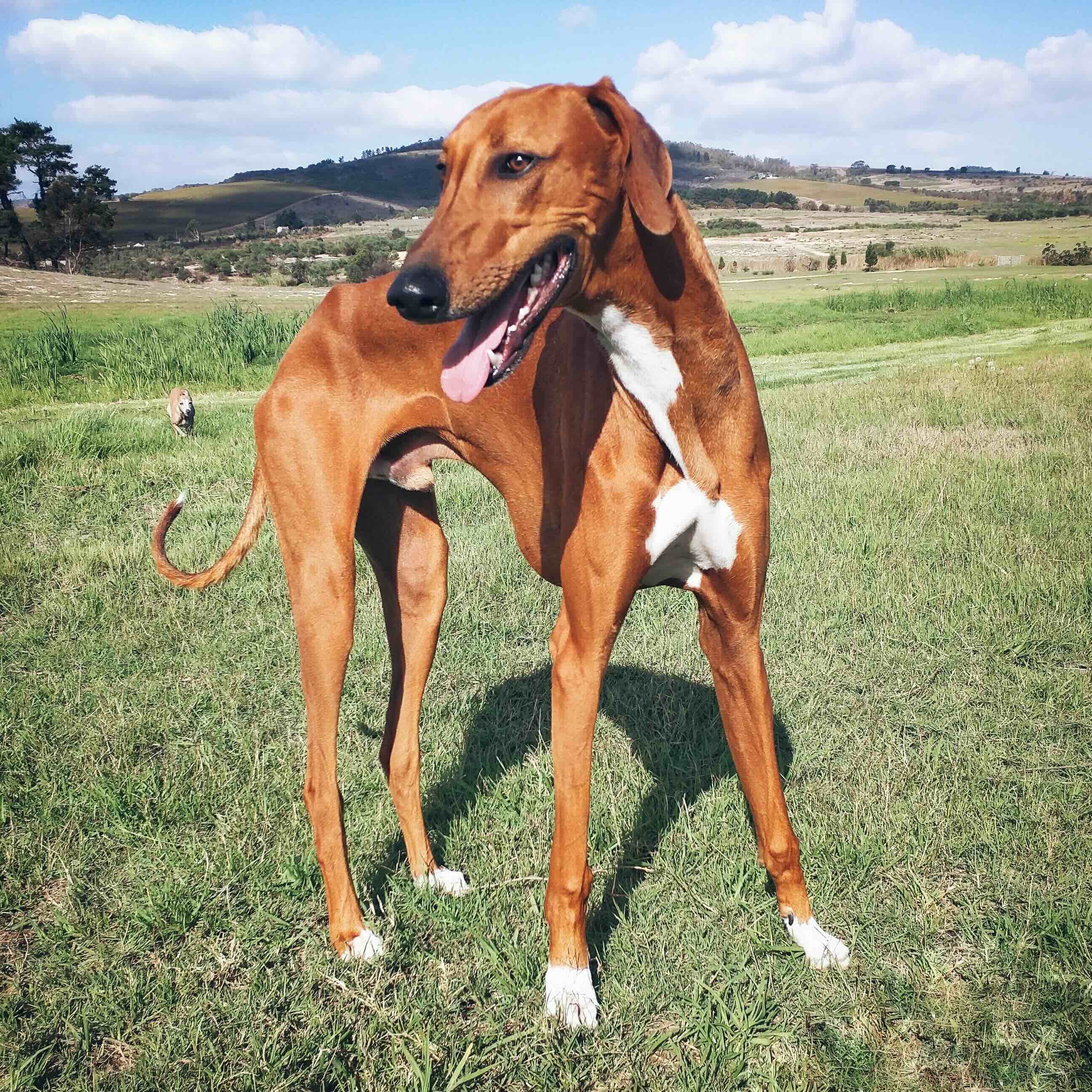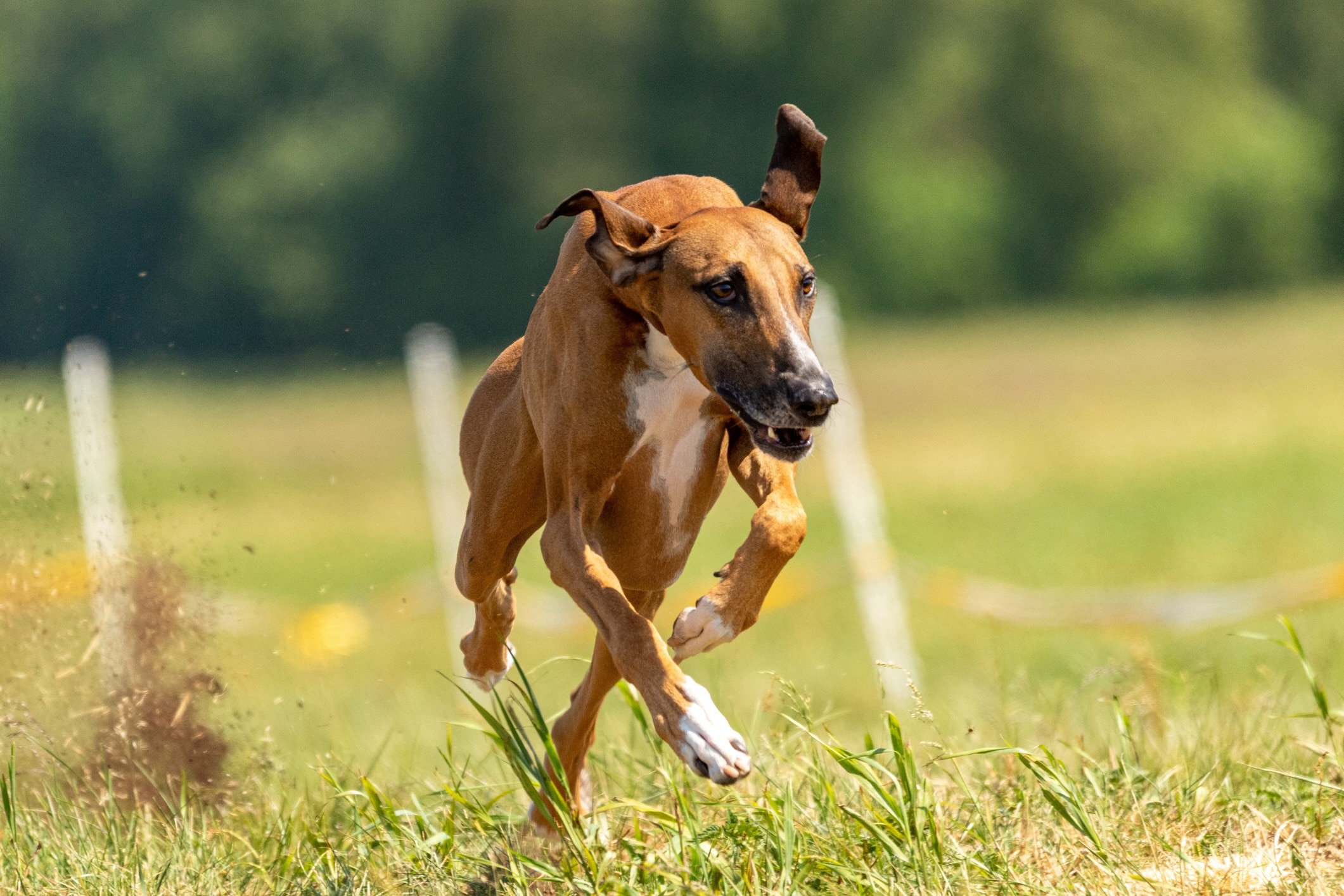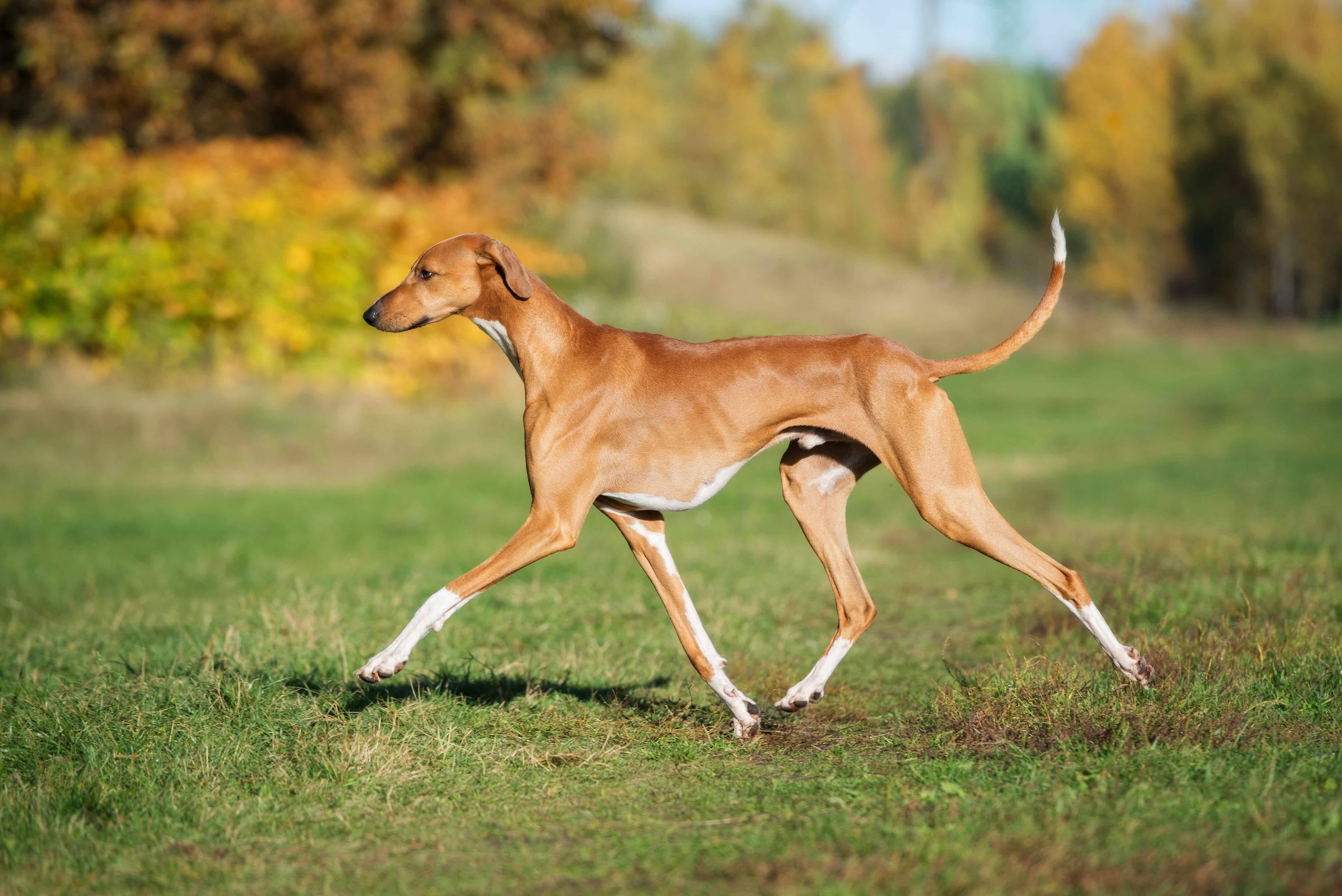Azawakh
animalinfo/iStock / Getty Images Plus via Getty Images
The Azawakh (pronounced oz-a-wok) is a sight hound native to sub-Saharan Africa. No written records exist that document the breed’s origin, but these dogs were relied on as hunters and guardians for tribes in countries like Mali, Niger, and Burkina Faso, according to the American Azawakh Association.
An Azawakh dog is lean and well-muscled: traits that benefitted these dogs in their native lands.
“Azawakhs are native to the Sahel region [of Africa], which is incredibly hot,” says Kayley Paylor, an Azawakh breeder and dog trainer at In Stride Azawakh & Training, in Washington State. “As such, the AKC breed standard states that the breed should show a minimum of three to five ribs in correct condition. The breed must be this lean in order to exist in the heat of the desert.”
A healthy Azawakh dog typically weighs 33–55 pounds and stands 23–29 inches tall at the shoulder.
Caring for an Azawakh
The Azawakh is an athletic dog breed with high energy, an intelligent mind, and a loyal nature. When given exercise and mental stimulation, the Azawakh settles down easily in the house.
Despite their energy, these dogs are not overly excitable; Azawakh pet parent Diane Taschler Swick describes them as “reserved.” The breed has a perceptive and sensitive nature, so “the personality of the Azawakh depends on where they are and who is in the room,” she adds.
Azawakh Health Issues

The Azawakh is considered to be a generally healthy dog breed with only a few occasional health concerns, which tend to develop in the later stages of the dog’s life. Most Azawakhs have a lifespan of 12–14 years.
Hypothyroidism
Azawakhs sometimes produce lower levels of thyroid hormone, causing hypothyroidism.
This condition can lead to a variety of health issues, including weight gain, lethargy, and frequent skin infections or ear infections. Seizures have also been noted in the Azawakh dog breed, and there is some indication that this is linked to hypothyroidism, says Paylor.
If you suspect hypothyroidism in your Azawakh, consult your veterinarian. Choosing a vet who is experienced in treating sight hounds is important, since these dogs have a different health profile than other dog breeds.
Hypothyroidism isn’t curable, but it is manageable with medication. Affected dogs can live a long and happy life.
Masticatory Muscle Myositis
Masticatory muscle myositis is a condition that causes key muscles in the head and jaw to atrophy (break down), making it painful or difficult for a dog to open and close their mouth. This condition has been seen in Azawakhs, and quick action is essential to reversing damage.
If you notice your dog is reluctant to open their mouth or you notice a sharp decline in appetite, seek veterinarian assistance right away.
What To Feed an Azawakh

Feed an Azawakh a high-quality, well-balanced dog food. Look for a dog food diet that complies with the Association of American Feed Control Officials (AAFCO) nutritional standards.
When choosing a dog food, keep in mind your pet’s life stage and choose a diet that’s appropriate for either Azawakh puppies, active adults, or senior dogs. If you have specific questions based on your dog’s activity level, health, or body condition, consult your veterinarian.
How To Feed an Azawakh
In most cases, a full-grown Azawakh dog will do best when given two meals a day, with regular feeding times in the morning and evening. Azawakh puppies can be fed smaller meals more frequently throughout the day to support the growth period’s increased need for nutrition and energy.
How Much Should You Feed an Azawakh?
As a basic guideline, follow the feeding instructions listed on the packaging of your chosen dog food.
Don’t overfeed an Azawakh; keep in mind that the breed’s stature is tall and lean, and some visibility of the ribs and hip bones is a sign of good health for these dogs. Your vet can tell you what your dog’s healthy weight should be.
Nutritional Tips for Azawakhs
When you feed your Azawakh a nutritionally complete dog food formula, it’s unlikely that you’ll need to give them dog-friendly supplements. However, if your dog has conditions that require nutritional support, consult your veterinarian for guidance and specific recommendations.
Behavior and Training Tips for Azawakhs
Azawakh Personality and Temperament

The personality of the Azawakh has been shaped by the breed’s history as guardians and hunting dogs. The Azawakh is described as attentive and reserved by the breed standard.
“Azawakhs have been a working breed for thousands of years, and they do well when given a job,” says Paylor. “This can be anything from hiking to dog sports, but their mental state often suffers if left to their own devices in the backyard.”
Because of the breed’s heritage as a camp guardian and a hunting breed, “Azawakhs are slow to warm up to strangers and tightly bonded to their people,” Paylor says. “They are incredibly loyal to their humans and quick to notice the strange, unusual, or suspicious.”
At the same time, an Azawakh shouldn’t be overly fearful or timid. It’s important that you properly socialize an Azawakh puppy from an early age. When socialized, these dogs tend to do fine with children who understand proper boundaries.
Azawakh Behavior
Azawakhs are known to coexist peacefully with other dogs, but keep in mind that this sight-hound breed might be prone to chasing small household pets, like cats. Introduce a cat to your dog slowly and correctly for a positive outcome.
Always keep your Azawakh dog on a leash or within a fenced yard whenever they’re outside. This safety measure prevents them from running off after things that catch their eye.
Azawakhs are also quiet dogs, so you won’t often hear them barking. And while they are energetic sprinters, Azawakhs are often low-key and calm dogs inside.
“Like other sight hounds such as a Greyhound or Saluki, they have a natural ‘off’ switch and in the house tend to settle easily,” says Paylor.
Azawakh Training
The highly intelligent nature of the Azawakh means this breed thrives on a partnership with human companions built on trust and consistency. An Azawakh has the capacity to be exceptionally loyal and obedient, but these dogs are always on alert. This means that how well your dog responds to a cue might be influenced by what’s happening in the environment.
Paylor says that nearby commotion, such as construction or wildlife, could make a watchful Azawakh hesitant to comply with your request.
Always practice patience, consistency, and positive reinforcement when training an Azawakh dog.
Fun Activities for Azawakhs
-
Nose work
Azawakh Grooming Guide

The Azawakh dog breed has a short, thin coat that keeps grooming needs to a minimum. They shed moderately year-round and blow their coat in the spring and fall, so expect more shedding during these seasonal events.
Skin Care
The Azawakh doesn’t need special skin care or regular bathing. If the dog becomes especially dirty, a bath might be in order. But in many cases, brushing their short coat will remove any dry dirt.
Coat Care
The short, thin coat of the Azawakh means that very little routine coat care is required. All dogs benefit from regular brushing to distribute natural oils, remove dead skin cells, and shed fur, but matting isn’t a concern given the short length of the breed’s fur.
Eye Care
There aren’t specific eye care requirements for the Azawakh. However, routinely check your dog’s eyes and be alert for changes in eye health. Symptoms like redness, discharge, or cloudiness could indicate an infection or other problem, for which you should contact your vet right away.
Ear Care
The folded, triangular ears of the Azawakh droop next to the head and require frequent cleaning. Ear wax and debris can build up in the ear canal, so it’s important to keep your dog’s ears clean. Use a vet-recommended ear cleaner and be alert for signs of infection.
Paylor says some Azawakh dogs have very thin ears that are prone to splitting. Talk to your vet for guidance if this happens.
Recommended Products
Considerations for Pet Parents
If you’re trying to decide whether an Azawakh is the right dog for you, it’s important to compare the breed’s care requirements with your situation and lifestyle. While these dogs can make loyal, affectionate, and active pets, they’re not always the best choice for a pet parent.
“They are slow to warm up to strangers and can be standoffish,” Paylor says. “They typically do best in homes that understand and appreciate both sight hound and guardian breed temperaments.”
These dogs need an experienced, adaptable dog parent who is willing to train and socialize their Azawakh puppy consistently. With the right guidance, this quiet dog will grow to be confident and well-mannered.
Azawakh FAQs
How much does an Azawakh cost?
While the average Azawakh price varies, you can expect to pay around $2,500 for a puppy.
Why are Azawakhs so expensive?
Azawakh dogs are rare in the U.S., which is a key reason why they often come with a high price tag.
Are Azawakhs good pets?
Yes, an Azawakh can be a good pet if you understand the breed’s needs and are prepared to meet them. Frequent stimulation and regular exercise are essential for these dogs that thrive when they have work to do.
Are Azawakhs rare?
Yes, the Azawakh is a rare dog breed. In 2024, the American Kennel Club (AKC) ranked them as the fifth-rarest breed in the U.S.

